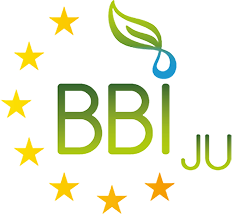Produce food ingredients with high nutritional value from aquatic sources
Call name:H2020-BBI-JTI-2020 | Call ID:H2020-BBI-JTI-2020
Topic Description:
Among the UN Sustainable Development Goals, ‘feeding the planet’ features prominently. The growing world population will need additional sources of protein and ingredients with high nutritional value that do not deplete finite natural resources. The food industry can make a substantial contribution by increasing its resource efficiency. However, there will also be a need to tap new sources of protein.
The aquatic and marine worlds and the fisheries and aquaculture industries contribute to the UN’s goal while maintaining healthy marine and aquatic ecosystems. Scientific evidence unambiguously points to sustainable culture and capture at low trophic levels as a way to bring about an increase of food production from aquatic resources. These include, for example, microalgae, seaweed, marine invertebrates, side streams from the fish processing industry, and herbivore filter feeders (e.g. molluscs). Moreover, the recent implementation of the landing obligation for fish bycatch under the common fisheries policy opens up opportunities for the efficient and sustainable transformation of such under-used streams into valuable ingredients.
A number of projects have demonstrated the successful conversion of aquatic biomass, mainly algae, into high-value ingredients for food applications. Actors in the aquatic and marine worlds are confident that by combining forces they can start converting the many aquatic and marine species and fisheries/aquaculture-industries side streams into food applications at commercial level. Europe can take the lead in this direction by enabling such a first-of-its-kind operation.
The specific challenge is to sustainably scale up the conversion of new and sustainable aquatic and marine sources for human food and contribute to food and nutrition security.
Scope:
Sustainably produce on a large scale in a first-of-its-kind industrial setting, ingredients with high nutritional value for food for human consumption from under-used species and/or side streams from: (i) marine and aquatic sources; or (ii) the fisheries industry.
The scope of this topic includes:
- Dedicated cultivation;
- Harvesting from ecosystems;
- The use of side streams from the fisheries/aquaculture industries – all to be done in a sustainable way.
Proposals for the cultivation of aquatic and/or marine biomass must include innovative and sustainable production and harvesting systems. They must also include the smart integration of several stages in the industrial-production plant to maximise biomass production and reduce production costs.
Proposals for harvesting from ecosystems must include an estimate of the available feedstock and plans to ensure the continued availability of this feedstock over the long term. Proposals must include sustainable and innovative harvesting systems. The objective of this requirement is to ensure that exploiting these sources for food ingredients preserves biodiversity and ecosystem services.
Proposals that focus on using side streams from the fisheries or aquaculture industry must include innovative conversion technologies and prove the sustainability of the whole value chain.
The scope of this topic includes: (i) bioreactor design where needed for the large-scale production of food ingredients; and (ii) integrating smart industrial-unit prototype design.
The main scope of this topic is the provision of food ingredients for human consumption. However, complementary production of feed ingredients or other high-value products (e.g. ingredients for cosmetics, pharmaceuticals, performance materials) may also be incorporated in projects. Proposals for these types of complementary production would be especially welcome if they contribute to the economic viability of the value chain and feature ‘no waste’ production. When aiming for high-value products other than food or feed, proposals need to consider the end-of-life phase of the complementary products, so that they are either fully recyclable, or else degradable or compostable under specified conditions [3].
Proposals must also include considerations of consumer safety and consumer perception of the planned new food ingredients. Any potential hazards associated with the developed processes and products should be analysed to check that the products will comply with relevant EU legislation on chemicals risk management, toxicity and safety.
The envisaged industrial setting must fully integrate: (i) feedstock supply and/or cultivation; (ii) sustainable logistics; and (iii) processing technologies. This is the best way to deliver food ingredients with targeted functions to meet human food demand at competitive prices. Proposals should demonstrate effective and cost-efficient operation at commercial scale, applying (where relevant) the cascading use of the biomass feedstock to maximise resource efficiency.
Proposals have to include the related primary sector(s) as strategic partner(s) in the value chain. This means that they participate in the design of the value chain and benefit from it.
Proposals should include market actors (e.g. brand owners, distributors, end-users) as strategic partner(s) in the value chain. These partners can assist in directing the value chain towards identified or newly emerging market demands.
Proposals may include any processing technology that has been demonstrated in an optimised value chain at TRL 6-7 and should encompass all processing stages leading to intermediate and end products.
Proposals must address all the requirements for flagship actions shown in Table 3 of the Introduction.
The technology readiness level (TRL) at the end of the project must be 8. Proposals should clearly state the starting and end TRLs of the key technology or technologies targeted in the project.
